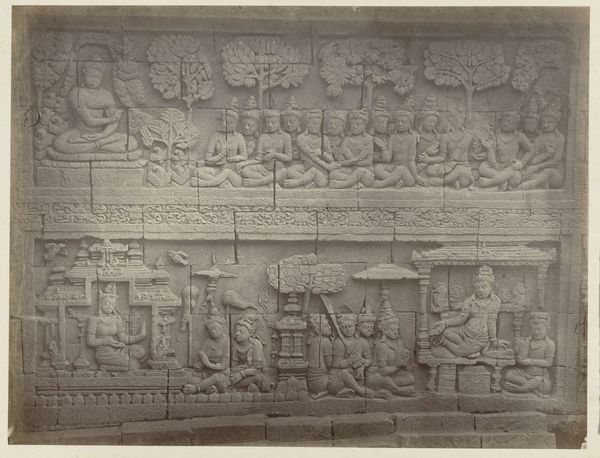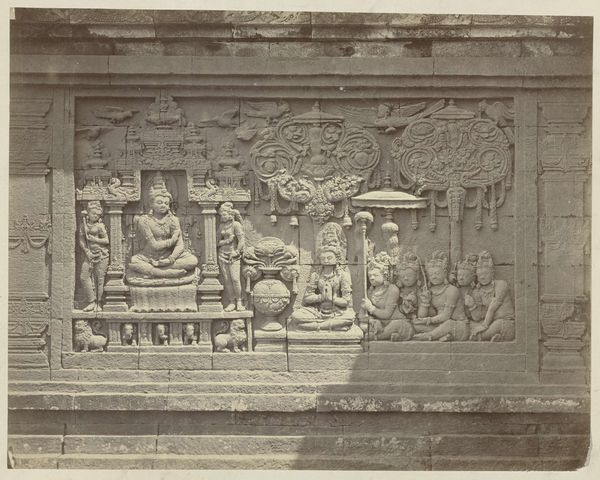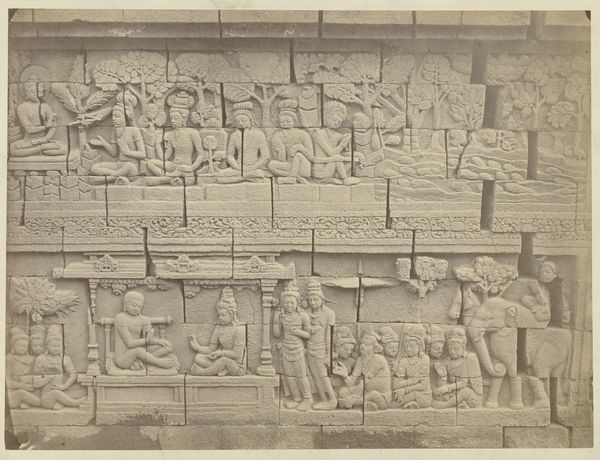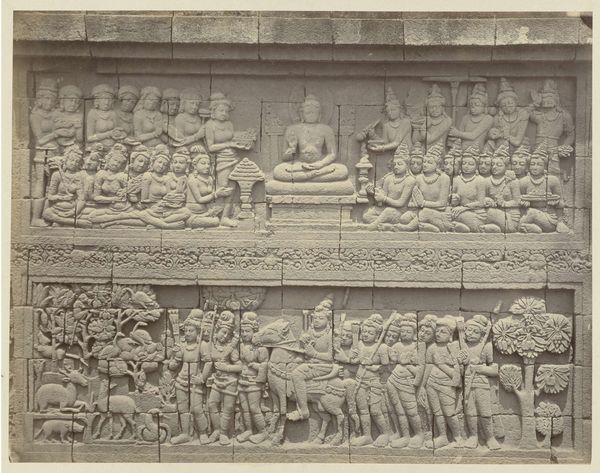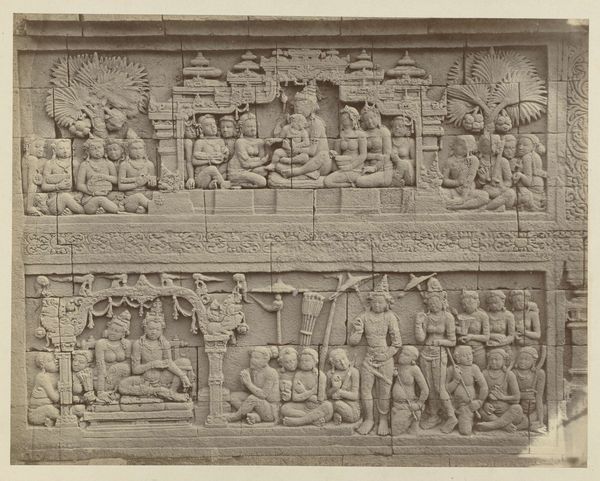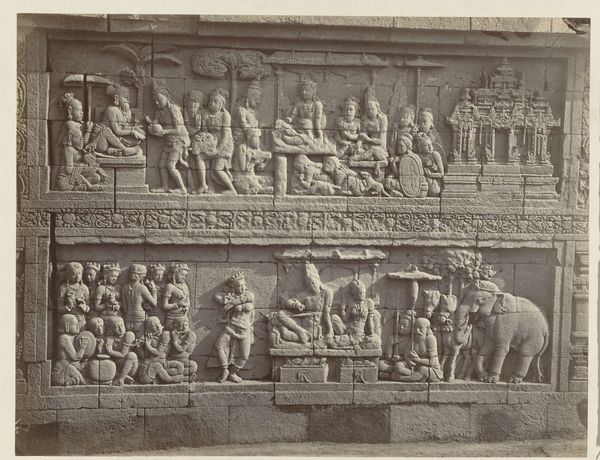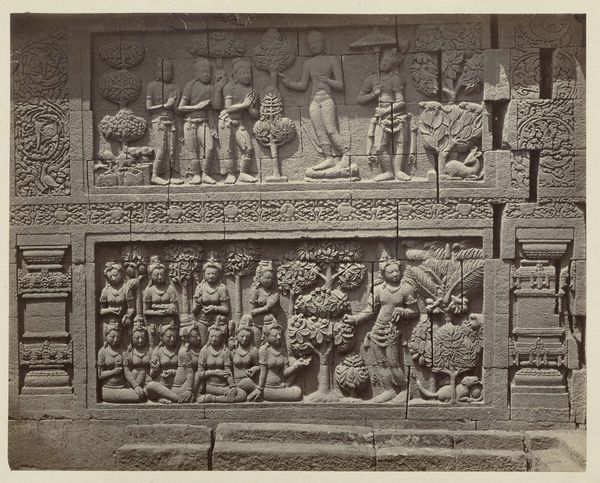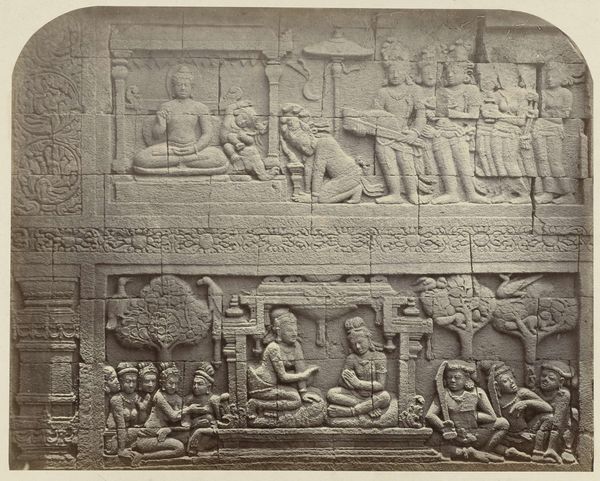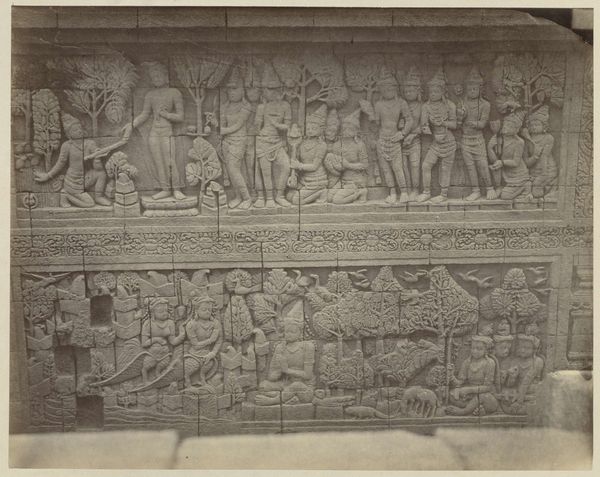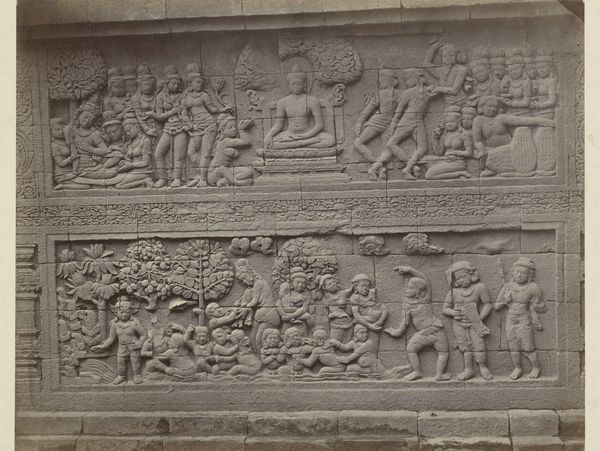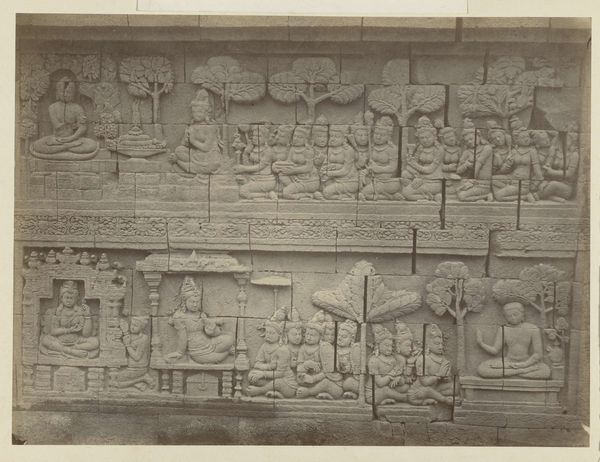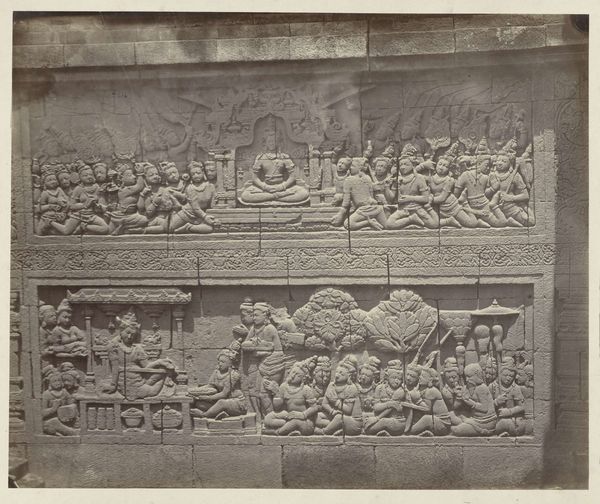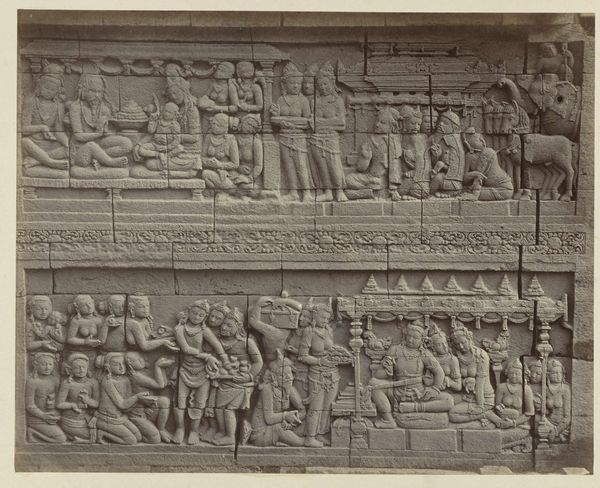
Basreliëf in de muur aan de noordzijde van de Borobudur Possibly 1873 - 1879
0:00
0:00
relief, photography
#
natural stone pattern
#
narrative-art
#
muted colour palette
#
asian-art
#
relief
#
landscape
#
figuration
#
photography
#
carved into stone
#
geometric
#
ancient-mediterranean
#
limited palette
Dimensions: height 300 mm, width 400 mm
Copyright: Rijks Museum: Open Domain
Curator: The piece we're looking at is a photograph of a bas-relief found on the north side of Borobudur, taken between 1873 and 1879 by Isidore Kinsbergen. The artistry, this photographic record of stone carved imagery… I’m instantly thinking about the manual labor embedded here. Editor: Immediately, I'm struck by the somber mood it conveys despite the obviously vibrant narrative it contains. The figures, the muted palette of the stone... it feels almost like a memory being recalled, distant and revered. Curator: Precisely. What fascinates me is understanding how it was made. The removal of stone, the deliberate tooling, and the craftspeople employed by then contemporary Javanese workshops--likely commissioned to represent didactic Buddhist tales for viewers who had varying degrees of literacy and wealth. Editor: That brings up some vital questions about accessibility and cultural capital. Who had access to the stories depicted here? Was it a tool for social cohesion, or did it reinforce existing hierarchies? These narratives within the relief would have served didactic and, likely, ideological purposes within the social fabric of that time. Curator: And that leads to more interesting questions about who crafted the physical support and architectural infrastructure as well. Because that work, in turn, influences and sets the bounds for this carving; there were different roles to be considered beyond the "artist" with design control alone. Editor: Yes, we see power dynamics playing out in real time. I also consider how this form of storytelling engages with a viewer versus a written account—what possibilities, and limitations, are produced by a visual rendering of these traditional narratives? The scale of the overall complex forces certain embodied and participatory relationships between the individual, their environment and communal faith systems. Curator: It’s easy to forget that Kinsbergen’s photographs here are the result of a complicated interaction between technology, travel, and trade routes and his role as an agent within networks of colonial infrastructures. Understanding how such photography worked reveals more about the world it sought to record, than any assumed "objective" perspective from Kinsbergen alone. Editor: Absolutely. It really brings forward the multiple, interwoven layers of interpretation necessary when engaging with cultural artifacts from such a remove. Curator: Agreed. Editor: Well, this look at the relief at Borobudur has given me a richer understanding of the way that material conditions and social meanings get molded together. Curator: I, too, am reminded to look closely at production histories and manufacturing operations while remembering how deeply labor operates inside these finished pieces.
Comments
No comments
Be the first to comment and join the conversation on the ultimate creative platform.
